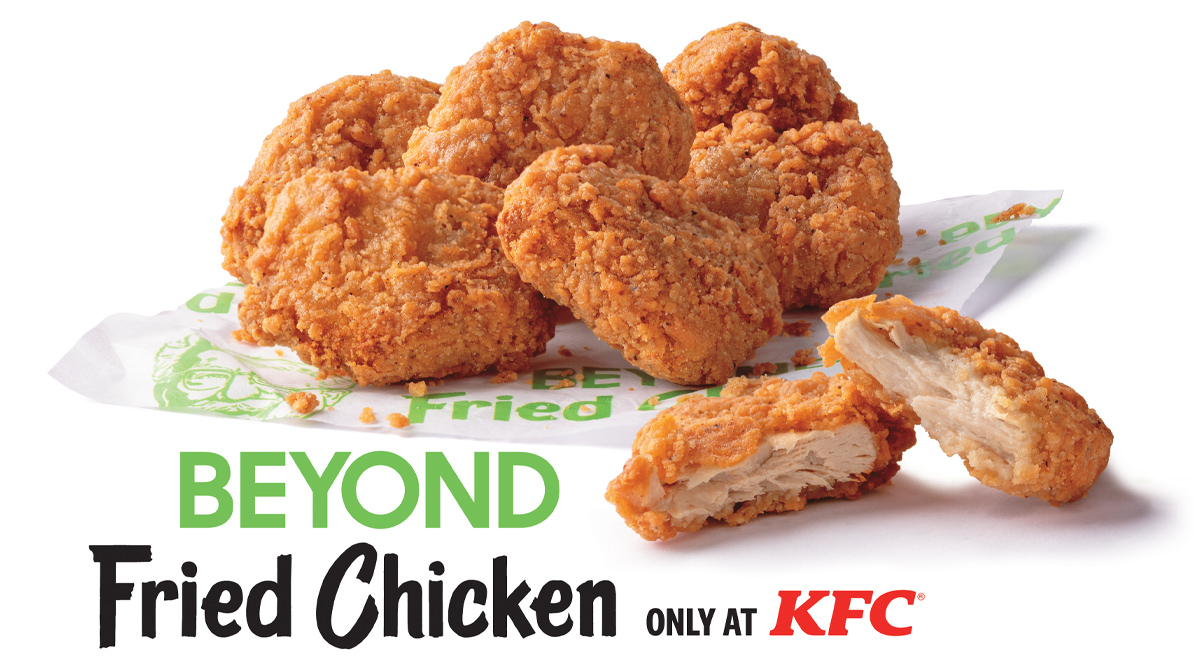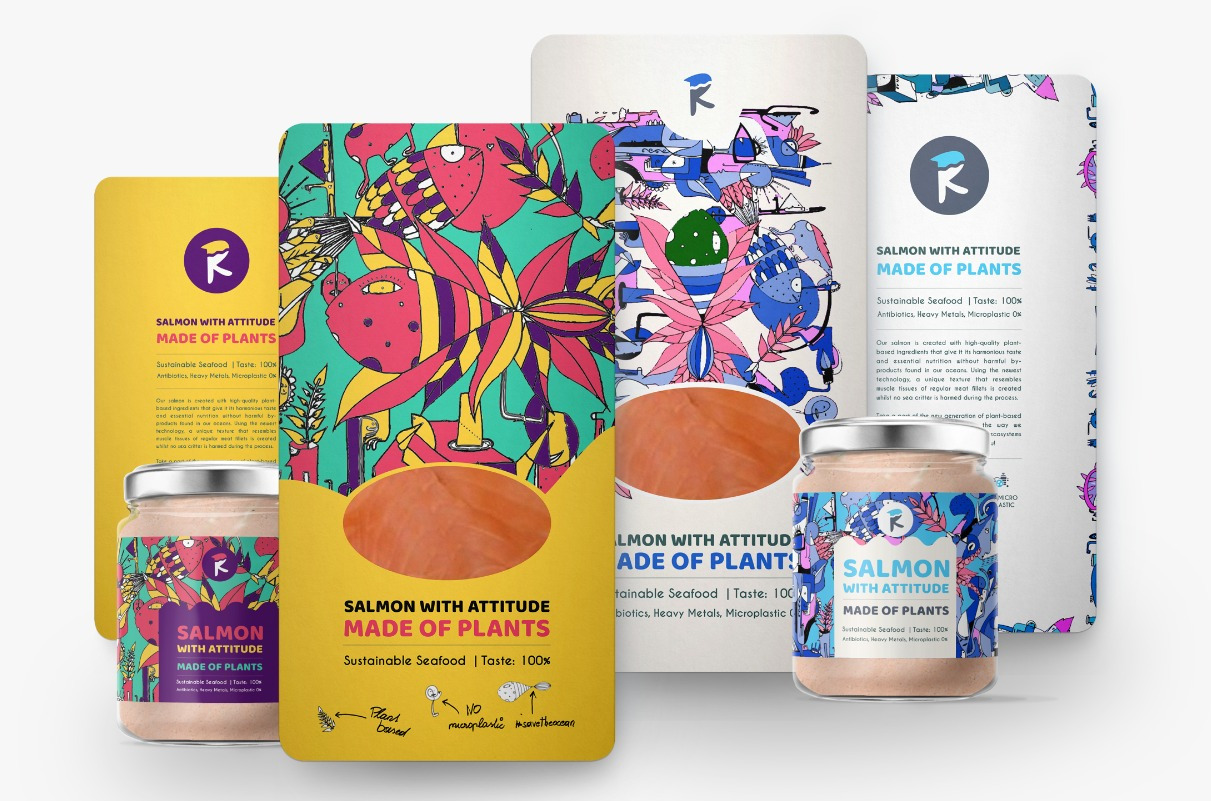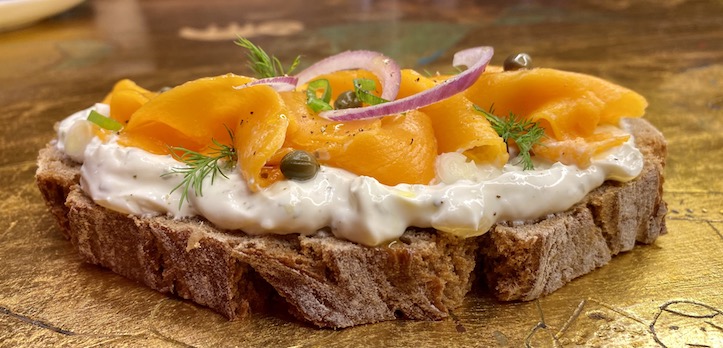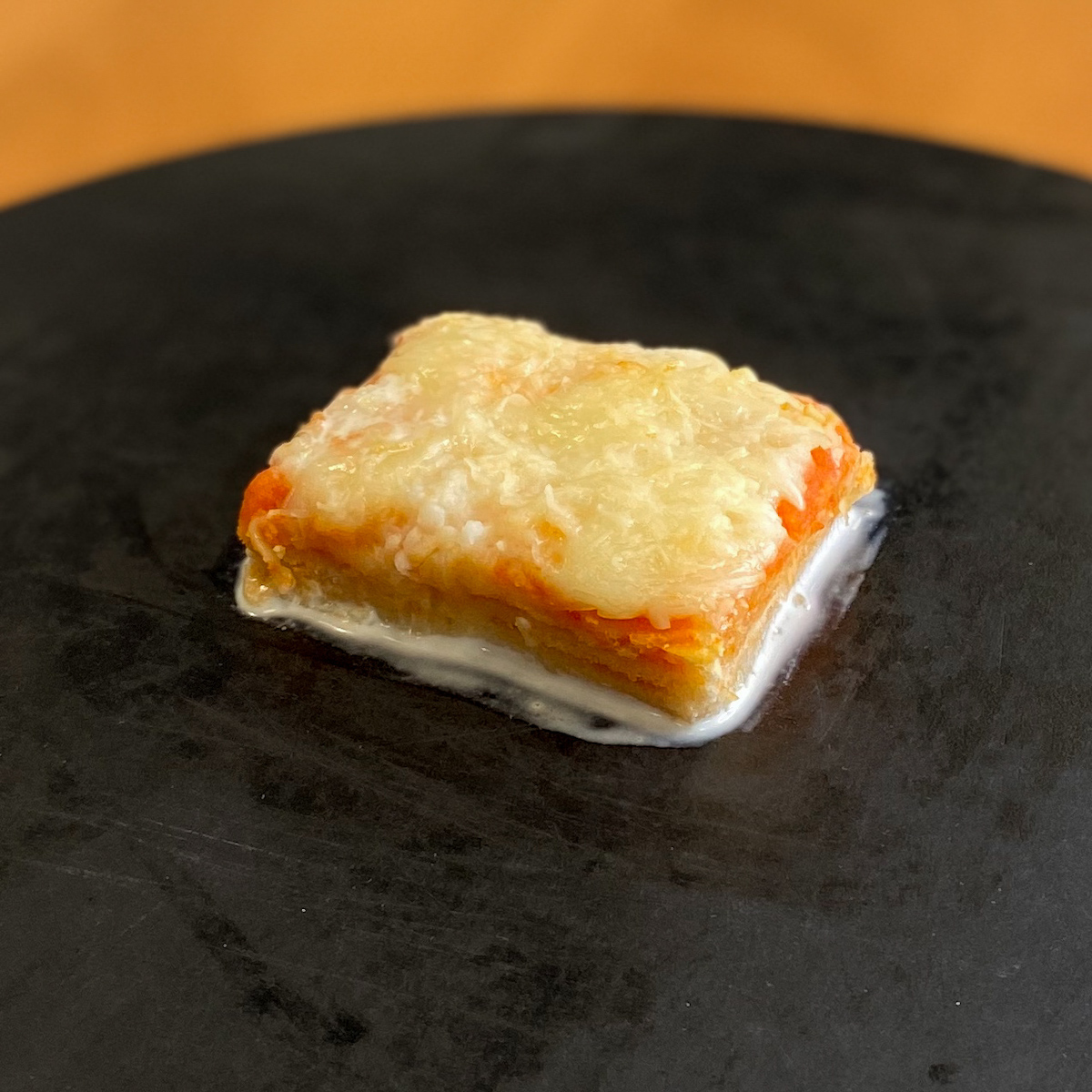"How? Printed food? That's way in the future, isn't the industry that far along yet..." Yes it is - the industry is even further ahead. Printed steaks, roasts, but also salmon and tuna are already on the supermarket shelves of various shops, also here in Austria. You don't believe that? Read here which products are already being additively manufactured from plant-based raw materials. By Sabine Slaughter
The poor innocent pea that has been bouncing around TV commercials lately, and can get so angry because its sisters and brothers have been made into "fake" sausages, bratwursts and steaks, might also be upset about printing. 3D printing to be precise, because there is plenty of plant-based food that is additively manufactured and can now be found on supermarket shelves in some cases.
Sustainable food production is on everyone's lips. Vegetarians, vegans or frutarians are in vogue. January has even been partially renamed Vegan January, and social media are teeming with propagandists of one diet or another. Recipes are published, filmed, praised to the skies and people are encouraged to try them. These three diets have one thing in common - they are sustainable and have less of an impact on the climate, since at least in the case of vegans and frutarians, animal ingredients are completely dispensed with.
But what about the "normal eaters", the meat and fish fans who don't want to give up their favourite foods? They too can eat in a climate-friendly and sustainable way. While initially only burgers, sausages and other items were available made from plant-based ingredients, there is now already a wide selection of additively produced "fake" steaks, burgers, roasts and also fish. So for each of us, it could already look just like the TV commercials mentioned above - a table full of supposed meat products that are, however, all made from sustainable, plant-based raw materials and come from the printer. Steaks, roasts & co.
Steaks, roasts & co.
The Israeli company Redefine Meat calls these old steak products additively manufactured with a patent-pending 3D printing technology. These are comparable to real beef steaks in terms of texture, taste and appearance. Working with butchers, chefs, food technologists and flavour expert Givaudan, Redefine Meat has digitally mapped more than 70 sensory parameters in its alt-steak products, including the texture, juiciness, fat distribution and mouthfeel of premium beef. Using Redefine Meat's proprietary "Alt-Muscle", "Alt-Fat" and "Alt-Blood" plant-based recipes, the Alt-Steak products are produced layer-by-layer in the company's industrial food 3D printers. By printing with multiple ingredients and ingredients, Redefine Meat can create sustainable, high-protein, cholesterol-free steaks that look and taste like beef.
First introduced in 2019, a blind tasting of a wide variety of Mediterranean meats was held in 2020 in conjunction with meat distributor Best Meister. Unsuspecting meat eaters found no perceptible differences to animal meat, and the acceptance rate exceeded 90 per cent.
Following the successful experiment, Redefine Meat announced a strategic partnership with Best Meister to market its products in Israel from the first half of 2021.
"Since the company's inception, we have worked to develop a delicious and affordable plant-based alternative to steak, one of the most valued food products and the flagship of the entire meat industry," said Eshchar Ben-Shitrit, CEO and co-founder of Redefine Meat. "We knew that developing a high-quality and nutrient-rich meat-free alternative product would require new technologies and production processes that have not been seen before in the food industry. Only if this product rivals the quality of real meat could it gain mass market acceptance."
"We want to change the belief that delicious meat can only come from animals, and we have all the building blocks to make this happen: high-quality meat products, strategic partnerships with players around the world, a large-scale pilot line under construction, and the first industrial 3D Alt-Meat printers to be deployed to meat retailers later this year," concludes Ben-Shitrit. Pork, beef and chicken
Pork, beef and chicken
Pork 2.0 and Beef 2.0 are products of the Spanish company Nova Meat. The main ingredients of these two products are peas and rice protein paste. He would have tried to choose raw materials that do not negatively impact the environment, Scionti said. Avocados or quinoa would lead to an increased demand, which would then have to be imported and would be negative for the climate and the environment.
Researcher Giuseppe Scionti has already tried his hand at chicken meat in his factory in Barcelona. The texture is precisely the factor that is most difficult to perfect in synthetic meat: "It has a fibrous texture," explains the entrepreneur, "not like that of a hamburger." The difficulty, according to Scionti, lies in rearranging the nanofibres of plant proteins to mimic the structure of animal proteins. By extracting amino acids from pea and rice protein, the fillet also has the nutritional properties of a beef fillet.
At the moment, printing 100 grams of plant-based meat costs just under three dollars, but Scionti believes that when the process is industrialised and commercialisation starts, the price will drop as production volumes increase. The Italian has also already applied for a patent - for the microstrand that imitates the natural structure of meat tissue. Chicken Nuggets
Chicken Nuggets
KFC, the American fast food chain, has already announced that it wants to offer chicken nuggets from the printer in the future. The company has chosen Moscow in Russia as its test area, as it is working with a research laboratory there. The 3D-printed chicken nuggets should not only look like the "real" ones, but also taste like them, KFC explained. Here, the main ingredients are supposed to be vegetable, although chicken cells are also to be printed.
Fat balls, meat & co.
Plant & Bean, developer and manufacturer of premium plant-based food products, has announced the opening of Europe's largest plant-based meat production facility in the UK. The new plant will enable efficient production and distribution across Europe - enabling brand owners to meet the rapidly growing demand for plant-based meat. The partners of Plant & Bean, which grew out of the meatless business unit of Brecks Foods, consist of Griffith Foods, Gushen as a specialist producer of high-quality non-GMO soy proteins, the world-renowned research institutes of Wageningen University & Research from the Netherlands, and the food and sustainability-focused Singapore Institute of Technology.
"Currently, 65 per cent of consumers do not eat plant-based meat due to price and quality. With our dual strategy, we believe we are in an ideal position to solve this problem through significant change. With our advanced global manufacturing strategy, brand owners finally have the opportunity to scale their product ranges to lower the price for consumers. With product quality in mind, we are making significant strides in improving the taste, texture and appearance of plant-based meats. We are bringing together the brightest minds in the food industry to reinvent the way we make alternative meat in terms of ingredients and process," says Edwin Bark, CEO of Plant & Bean
There is a consensus among Plant & Bean's customers that large-scale production is a basic requirement for cost reductions in plant-based meat products. Only with cheaper products is wide acceptance in the mainstream market achievable. By producing locally on a large scale, companies can significantly shorten their supply chains and thus realise savings.
Pea protein has twice the price of soy. For this reason, the company is working on developing computer-aided breeding technology to reduce the cost of peas and beans by 50 per cent. Plant & Bean is also working on optimising protein extraction so that multiple protein sources can be used at significantly lower cost. In addition, Plant & Bean wants to improve texture production together with its partners. The focus is on optimised extrusion technology to increase machine efficiency, reduce energy consumption and improve the consistency of plant-based meat. Smoked salmon printed
Smoked salmon printed
Plant-based smoked salmon is produced by Vienna-based Revo Foods and sold in supermarkets. Here, pea proteins, algae extracts, vegetable oils and citrus fibres end up in the 3D printer to produce what the company calls seafood with attitude.
Revo offers seafood made from plants that are better for health and the environment. "With our products, you can now enjoy the delicious treats of the ocean without worrying about overfishing or toxic heavy metals," the company says.
Doing things in a new way, making sure that no overfishing, no destruction of the oceans, no toxic waste (mercury, PCBs) end up in the seafood. A radical change in the food system would be necessary to preserve a livable planet for future generations, Revo explains.
"Food texture is super important. We have developed a new technology based on 3D printing of food that accurately replicates the texture and appearance of seafood. The 3D printing process combines natural and healthy ingredients such as pea proteins, seaweed extracts and fibre for superior nutritional value and taste. This gives our products such a realistic appearance that you can hardly tell the difference. Our process has been optimised to avoid food waste in the production process and get more of those healthy vitamins and omega-3 oils," says Revo.
The next step is to expand the business with an automated production line. Chocolate
Chocolate
Chocolate3 has specially developed a 3D chocolate printer. It can be used to print logos, lettering, pictograms and symbols. The company from Ismaning in Bavaria uses it to decorate all kinds of baked goods and thus create personalised sweets.
Belgian chocolate
Mona Lisa, the global decoration brand of the Barry Callebaut Group, is the first brand to launch personalised 3D-printed Belgian chocolate on a large scale. This move revolutionises the world of chocolate craftsmanship by combining industry-leading production technology, bespoke design and Barry Callebaut's chocolate expertise - enabling chefs to make their own unique creations and reproduce them quickly and cost-effectively, no matter how intricate or specialised the design. Pasta and Co.
Pasta and Co.
Indukern and Natural Machines from Barcelona are jointly developing ingredients and products for pasta and other foods that can be produced with the Foodini food printer. Foodini works with reusable food capsules that users can fill with ingredients of their choice.
"Food printing is a bet on the future. We have developed products that can be printed with a customised nutritional composition and with the most pleasing look, texture, aroma and chew. With our alliance with Natural Machines, we are taking another step forward in this area," explains Albert Adroer, Indukern Food Division Director.
For his part, Emilio Sepúlveda, CEO of Natural Machines, highlights that "we have taken advantage of the existing synergies between the two companies to create a profitable project that will help us continue to grow and further position ourselves as a benchmark in 3D food printing".
The collaboration between Indukern and Natural Machines offers a range of products optimised for Foodini 3D food printing. Both companies do not sell the recipe itself, but the actual product combined with a few other easy-to-source ingredients such as oil and water.
Conclusion
Printing food from plants is not only sustainable, it also offers alternatives that are of immense importance for the future and climate change.
We have only presented some of the companies and start-ups here. A large number of other companies are researching the 3D printing of food, whereby, in addition to the enrichment of vitamins and minerals required for nutrition, certain properties can of course also be improved. Whether this is useful or even desirable is left to the consumer. But there could also be other positive effects, such as the avoidance of allergens by means of the ingredients, tailored to individual consumer groups or even the individual, personalised.
By the way, 3D printing of food has little to do with dreams of the future. NASA has been researching this topic since 2006.

 Deutsch (Germany)
Deutsch (Germany)  Polski (PL)
Polski (PL) 










